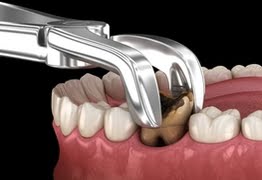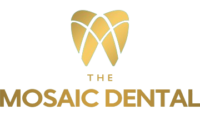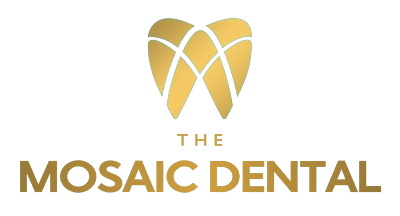Tooth Extractions

Tooth Extractions
 Our specialists follows a meticulous procedure for extraction. We are committed to helping you feel comfortable and making your treatment as painless and easy as possible.Tooth extraction, also known as dental extraction or tooth pulling, is the removal of a tooth from its socket in the jawbone. This procedure is usually performed by a dentist or oral surgeon and is considered when a tooth is damaged, decayed, infected, or causing other dental problems. Tooth extractions can be categorized into two types: simple extractions and surgical extractions.
Our specialists follows a meticulous procedure for extraction. We are committed to helping you feel comfortable and making your treatment as painless and easy as possible.Tooth extraction, also known as dental extraction or tooth pulling, is the removal of a tooth from its socket in the jawbone. This procedure is usually performed by a dentist or oral surgeon and is considered when a tooth is damaged, decayed, infected, or causing other dental problems. Tooth extractions can be categorized into two types: simple extractions and surgical extractions.
Simple Extractions:
Indications: Simple extractions are typically performed on teeth that are visible in the mouth and can be easily accessed by the dentist.
Procedure:
The dentist numbs the area around the tooth using a local anesthetic to ensure the patient is comfortable during the procedure.Using specialized instruments called elevators and forceps, the dentist loosens and then removes the tooth from its socket.Gauze is placed on the extraction site to control bleeding, and the patient is given post-operative instructions.
Surgical Extractions:
Indications: Surgical extractions are more complex and are necessary when a tooth is impacted (unable to fully emerge from the gum), broken at the gumline, or when it requires sectioning before removal.
Procedure:
Surgical extractions may involve making a small incision in the gum to access the tooth or removing bone around the tooth. In the case of an impacted tooth, the dentist or oral surgeon may need to remove surrounding tissue or bone to expose the tooth and extract it. Stitches may be required to close the incision, and post-operative care instructions are provided.
Reasons for Tooth Extractions:
Decay: Advanced tooth decay that cannot be effectively treated with restorative procedures may necessitate extraction.
Infection: Severe infection or abscess affecting a tooth may require extraction to prevent the spread of infection.
Impacted Teeth: Wisdom teeth (third molars) are commonly extracted if they are impacted, causing pain, infection, or crowding of neighboring teeth.
Crowding: Tooth extraction may be recommended to create space in the mouth, especially in orthodontic cases where alignment is a concern.
Broken or Fractured Teeth: Teeth that are broken or fractured beyond repair may need to be extracted.
Periodontal Disease: Advanced gum disease that has caused significant damage to the supporting structures of the teeth may lead to the need for extraction.
Aftercare and Recovery:
Following a tooth extraction, it is essential for patients to follow the post-operative care instructions provided by the dentist or oral surgeon. Patients may be advised to avoid certain foods, activities, and smoking to promote proper healing. Pain management may involve over-the-counter or prescription medications as recommended by the dental professional. Swelling and discomfort are common initially but usually subside within a few days.
Patients should adhere to any follow-up appointments to ensure proper healing and discuss options for tooth replacement if necessary.

FOLLOW US
Email - mosaicdentalclinic@gmail.com
Call Us -
+91 - 8105272038

